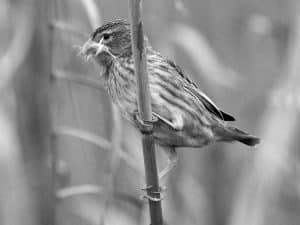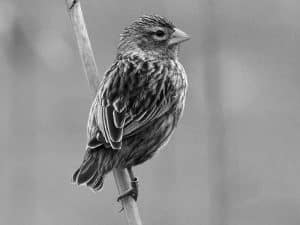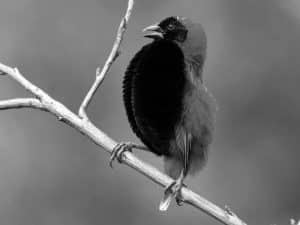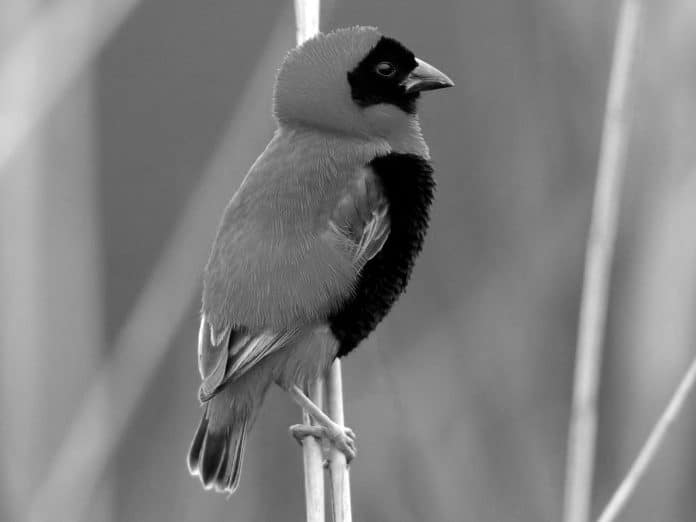Introduction to the Southern Red Bishop
The Southern Red Bishop, a stunning bird species native to Tanzania, is a true marvel of nature. With its vibrant plumage and captivating behavior, this avian resident has captured the hearts of birdwatchers and nature enthusiasts alike. As you delve into the world of the Southern Red Bishop in Tanzania, you’ll uncover a wealth of fascinating insights that will deepen your appreciation for this incredible creature.
Habitat and Distribution of the Southern Red Bishop in Tanzania

The Southern Red Bishop, scientifically known as Euplectes orix, is primarily found in the lush wetlands, grasslands, and agricultural areas of Tanzania. These birds thrive in environments where tall grasses, reeds, and aquatic vegetation provide ample nesting and foraging opportunities. Their range extends across the central and eastern regions of the country, with sightings commonly reported in areas such as the Serengeti National Park, Ruaha National Park, and the Kilombero Valley.
Physical Characteristics of the Southern Red Bishop
The Southern Red Bishop is a striking bird, with a distinct appearance that sets it apart from other avian species in the region. During the breeding season, the male birds display a vibrant scarlet-red plumage on their head, throat, and upper chest, contrasting beautifully with their black wings and tail. In non-breeding seasons, the males adopt a more subdued brown and yellow coloration. Females, on the other hand, maintain a more muted brown and grey hue throughout the year. With their stout beaks and compact bodies, these birds are well-equipped to navigate their lush habitat.
Breeding and Reproduction of the Southern Red Bishop
The breeding season of the Southern Red Bishop is a captivating spectacle. During this time, the males engage in elaborate courtship displays, fluttering their wings and singing melodious songs to attract potential mates. Once a pair is formed, they work together to construct a woven, dome-shaped nest, often nestled among tall grasses or reeds. The female lays a clutch of 2-4 eggs, which she diligently incubates for approximately 12-14 days. Upon hatching, both parents share the responsibilities of feeding and caring for the chicks until they are ready to fledge and become independent.
Feeding Habits and Diet of the Southern Red Bishop
The Southern Red Bishop is an opportunistic feeder, adapting its diet to the abundant resources available in its environment. These birds primarily consume a variety of seeds, grains, and insects, foraging extensively in agricultural fields, grasslands, and wetland areas. They use their strong beaks to crack open seeds and pluck insects from vegetation, playing a vital role in the ecosystem by controlling pest populations and contributing to the dispersal of plant life.
Behavior and Social Structure of the Southern Red Bishop

The Southern Red Bishop exhibits a fascinating social structure and behavior. During the breeding season, these birds form large colonies, with males establishing and defending their individual territories. The males use their vibrant plumage and melodious songs to attract females and deter rival males from encroaching on their nesting sites. Outside of the breeding season, the Southern Red Bishop is often observed in small flocks, engaging in communal roosting and foraging activities, demonstrating their adaptability and social nature.
Conservation Status and Threats to the Southern Red Bishop in Tanzania
The Southern Red Bishop is classified as a species of Least Concern by the International Union for Conservation of Nature (IUCN). However, like many avian species, the Southern Red Bishop faces various threats to its survival in Tanzania. Habitat loss due to agricultural expansion, urbanization, and climate change can significantly impact the availability of suitable nesting and foraging areas. Additionally, the use of pesticides and the illegal trapping of these birds for the pet trade pose ongoing challenges to their conservation.
Interesting Facts about the Southern Red Bishop
- The Southern Red Bishop is known to be a brood parasite, occasionally laying its eggs in the nests of other bird species, such as the Village Weaver.
- These birds have a remarkable ability to change the color of their plumage, transitioning from their vibrant breeding attire to a more subdued non-breeding appearance.
- The Southern Red Bishop is considered a pest by some farmers, as they can sometimes cause damage to crops, particularly during the breeding season when their population numbers are at their highest.
Where to Spot the Southern Red Bishop in Tanzania
Birdwatchers and nature enthusiasts visiting Tanzania have the opportunity to witness the captivating presence of the Southern Red Bishop in several prime locations. Some of the best spots to observe these birds include the wetlands and grasslands of the Serengeti National Park, the Kilombero Valley, and the Ruaha National Park. With their vibrant plumage and engaging behavior, the Southern Red Bishop is a must-see for any wildlife enthusiast exploring the diverse avian life of Tanzania.
Conclusion: Appreciating the Beauty of Tanzania’s Vibrant Avian Resident

The Southern Red Bishop is a true gem of Tanzania’s avian diversity, captivating all who have the chance to witness its beauty. As you delve deeper into the world of this remarkable bird, you’ll uncover a wealth of fascinating insights that will deepen your appreciation for the natural wonders of this East African nation. By understanding the habitat, behavior, and conservation status of the Southern Red Bishop, you can play a vital role in ensuring the continued survival of this vibrant avian resident, and contribute to the preservation of Tanzania’s rich biodiversity.
To learn more about the Southern Red Bishop and other fascinating bird species in Tanzania, consider joining a guided birdwatching tour or exploring the country’s diverse national parks and wildlife reserves. Immerse yourself in the natural splendor of this remarkable destination and discover the joy of observing these feathered marvels in their native habitats.

































